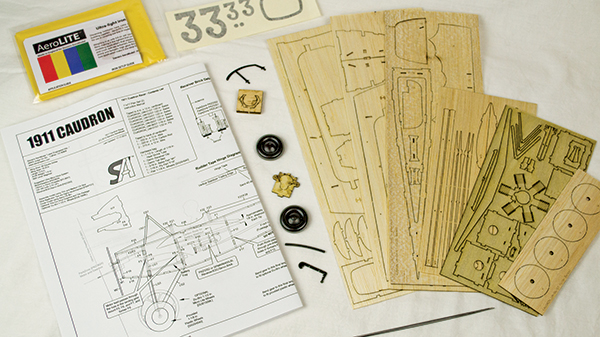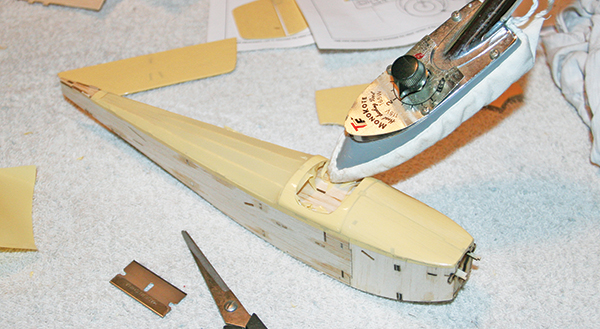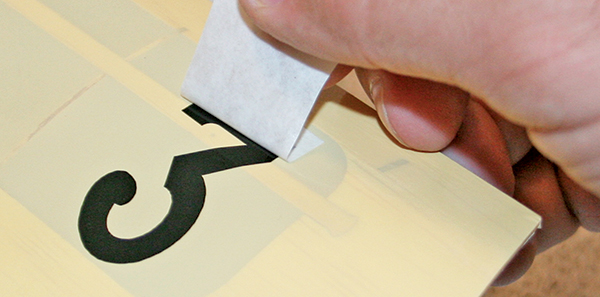Written by Terry Dunn
Abridged review and flight footage.
Celebrate air racing’s early years.
Featured in the April 2015 issue of Model Aviation.
Specifications
Model type: Laser-cut micro RC kit Skill level: Beginner builder; beginner pilot Wingspan: 18.25 inches Wing area: 56 square inches Length: 13.5 inches Weight: 1.4 ounces Construction: Built-up wood Radio: Three-channel Street price: $39; decal set $7.99; finishing package $16.99Test-Model Details
Power system: ParkZone PKZ3624 brushed motor system; E-flite EFL9051 propeller Battery: Thunder Power Pro Lite 125 mAh 3.7-volt LiPo battery Radio system: Spektrum DX8 2.4 GHz transmitter; Spektrum AR6410 receiver with integrated ESC and servos Ready-to-fly weight: 1.51 ounces Flight duration: 6 to 8 minutesPluses
• Easy to build. • Thorough manual. • Easygoing flight performance.Minuses
• Awkward battery-mounting position.Abridged Review
Read the full review in the April 2015 issue of Model Aviation. Take baby steps. This is common and sage advice for anyone starting something new or just getting back into the game. When it comes to building balsa kits, I fall into the latter category. I’ve only built one kit during the last several years and I was beginning to feel out of practice. Because of its small size and simple design, the Stevens AeroModel 1911 Caudron Racer seemed like a good first step toward regaining my balsa mojo. The model is a semiscale rendition of a little-known design from aviation’s pioneering days. Unlike other designs from that era, the Caudron does not have mazes of wires and struts to complicate the build. The kit includes a handful of small balsa and plywood sheets full of laser-cut parts. There is also a basic hardware package that includes pushrods, carbon-fiber rod, and more. I was impressed by the tail skid and receiver clip made from laser-cut Delrin plastic—high-tech material for a low-tech subject. As with the other kits in the Stevens AeroModel line of micro airplanes, the Caudron is designed to use ParkZone micro components. This includes the tiny geared motor setup, as well as the “brick,” which blends a 2.4 GHz receiver, brushed ESC, and two linear servos on one postage stamp-size board.Construction
The Caudron’s assembly begins with the fuselage. Most of this structure’s parts are keyed to interlock with the mating pieces. Because of the model’s size, I didn’t expect a precise fit on all of the parts. What I found, however, was that many joints had a solid friction fit and would hold together nicely while I fumbled to locate my continually misplaced glue bottle. I found it interesting that all of the fuselage parts are laser cut. Even the stringers that make up the rear turtledeck are custom pieces. If the thought of cutting balsa sticks intimidates you, there is no need to worry. The wing design is less conventional than the fuselage. It features an undercambered airfoil and only the top surface is finished. A peek at the bottom of a completed wing panel reveals exposed ribs and the spar. Don’t think of it as a shortcut. It’s a common design approach for indoor aircraft such as the Caudron. Despite the wing’s unique structure, I had no assembly problems. It is different, but not difficult. Follow the manual and you’ll be fine. I used the recommended ParkZone brick-and-motor system. Both components fit perfectly in place. The brick is secured with a Delrin clip. I was slightly worried about managing the tiny, .015-inch diameter pushrods, but they were easy to use. I had to be careful when heating the heat-shrink tubing to avoid damaging the nearby covering. I spent three evenings building the Caudron. Not until the end did I face my first hiccup. The included drawings show where the battery should be mounted, but the manual doesn’t indicate a method for retaining it. I placed a small patch of hook-and-loop tape on the battery tray’s rear lip, and the mating piece on my Thunder Power 125 mAh one-cell LiPo. The radio brick somewhat obstructs battery bay access, but battery swaps are manageable with a little patience.Image

The kit includes a few sheets of laser-cut parts along with hardware, drawings, and a comprehensive manual. This photo shows the optional finishing kit with AeroLITE covering and vinyl graphics.
Image

The Caudron is designed to use ParkZone’s ultramicro radio components. They drop right in and perform well.
Image

AeroLITE covering is a good match for small models such as the Caudron. It is easy to apply and conforms well to compound curves.
Image











Comments
Add new comment